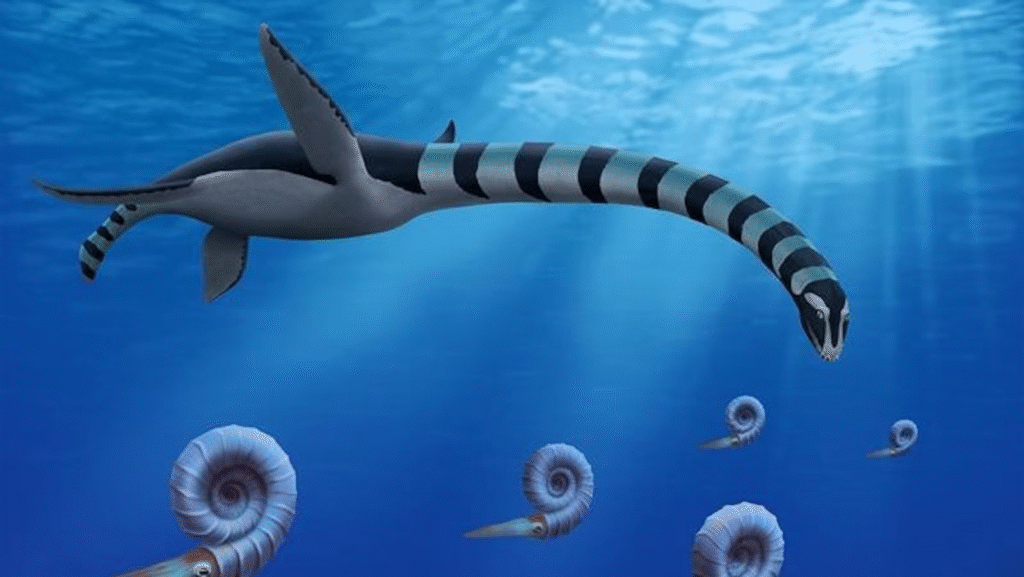New Sea Monster Species Found in Canada
Scientists recently discovered a bizarre prehistoric sea creature in Canada. Named Traskasaura sandrae, this long-necked plesiosaur roamed oceans 85 million years ago.

Fossils reveal a unique species unlike any known marine reptile. This find solves a decades-old mystery. It sheds light on ancient ocean ecosystems.
Background of the Discovery
The discovery stems from fossils found on Vancouver Island. Unearthed in 1988, the first specimen puzzled scientists for years. A well-preserved partial skeleton, found later, provided key clues. This allowed researchers to identify a new genus and species.
The creature lived during the Late Cretaceous period. Its habitat was a warm, prey-rich ocean. The find highlights Canada’s rich fossil record.
When It Happened
The initial fossil was discovered in 1988 along the Puntledge River. A father-daughter duo, Michael and Heather Trask, found it.
Additional specimens, including a juvenile skeleton, surfaced later. The breakthrough study was published in May 2025. It confirmed Traskasaura sandrae as a new species. The research spanned decades, with key work in 2024-2025.
Who Found It
Michael and Heather Trask discovered the first fossil. The recent study involved an international team. Scientists from Canada, Chile, and the U.S. collaborated.

Key researcher O’Keefe described the species as “strange” and “fascinating.” The team analyzed fossils from Courtenay, British Columbia. The genus name honors the Trask family. Their find sparked years of scientific inquiry.
Scientist Group and Organization
The study was led by an international group of paleontologists. No single organization was named as the primary driver.
Researchers from universities in Canada, Chile, and the U.S. worked together. The fossils were found near Courtenay, British Columbia. The team used advanced techniques to analyze the specimens. Their work built on decades of regional fossil research. The discovery adds to global paleontological knowledge.
Why This Discovery Matters
This find reveals a new piece of Earth’s ancient history. Traskasaura sandrae was a 39-foot-long predator. Its unique features challenge existing plesiosaur classifications.
The discovery shows how diverse ancient oceans were. It helps scientists understand prehistoric marine ecosystems. Such finds could inform conservation of modern oceans. The “odd” sea monster captivates public imagination. It underscores the value of fossil preservation.
U.S. Response to the Discovery
U.S. scientists played a key role in the study. They helped analyze the “excellently preserved” skeleton. O’Keefe, a U.S. researcher, called it a “gratifying” find. American media, like Newsweek and ABC News, covered the story widely.
Public interest in the U.S. has grown, with fascination for the “sea monster.” Museums may display replicas to educate audiences. The discovery strengthens U.S.-Canada research ties.
An international team, including U.S. researchers, pieced together its story. This plesiosaur, stretching up to 39 feet, was a top predator. Its long neck and odd traits set it apart. The find deepens our understanding of ancient seas. It also shows how teamwork across borders advances science. Public excitement in the U.S. and beyond highlights its impact. This “sea monster” reminds us how much history lies buried, waiting to be uncovered.


 Why Canadians Are Upset with Americans in 2025
Why Canadians Are Upset with Americans in 2025  China Unveils World’s Lightest Brain Chip to Control Bees
China Unveils World’s Lightest Brain Chip to Control Bees  No Jobs for Foreign Students in US, UK, Canada?
No Jobs for Foreign Students in US, UK, Canada?  The Universe’s End and New Timeline Emerges?
The Universe’s End and New Timeline Emerges?  Mark Carney Declares ‘American Betrayal’ in Victory Speech
Mark Carney Declares ‘American Betrayal’ in Victory Speech ![An ambulance is parked at the site of the Lapu Lapu event in Vancouver [Jennifer Gauthier/Reuters]](https://worldinfo.news/wp-content/uploads/2025/04/Car-Crashes-into-Vancouver-Festival-Kills-Several-554x346.webp) Car Crashes into Vancouver Festival Kills Several
Car Crashes into Vancouver Festival Kills Several